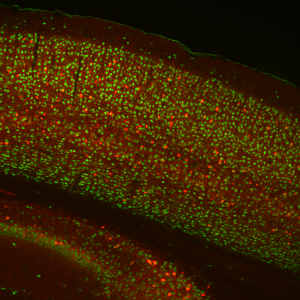


Neuronal Ensembles, Dendritic Spines, and Hydra
The goal of our laboratory is to decipher the neural code, i.e., the relation between the activity of neurons and behavior or mental states, by understanding the function of the neural circuits and the biophysical properties of its elements.
Why focus on neural circuits? For over a century, the neuron doctrine — which states that the neuron is the structural and functional unit of the nervous system — has provided a conceptual foundation for neuroscience. This viewpoint reflects its origins in a time when the use of single-neuron anatomical and physiological techniques was prominent. However, recent multineuronal recording methods have revealed that groups of neurons, rather than individual cells, can form physiological units and may generate emergent properties and functional states. The focus on the emergent properties of neural networks is a new paradigm for neuroscience, and can incorporate knowledge acquired with single-neuron approaches and go beyond them, helping us understand how emergent functional states generate behavior, cognition and mental disease.
We are testing the hypothesis that neuronal circuits generate emergent functional properties using electrophysiology and a variety of optical methods which we have helped develop such as calcium imaging, two-photon imaging, two-photon uncaging, two-photon optogenetics and holographic microscopy. In particular, we are studying the role of coactive groups of neurons, known as “neuronal ensembles” in the mouse cortex. The cortex is the larger part of the brain in mammals and is the primary site of mental functions like perception, thinking, memory, control of voluntary movements, imagination, language, art and music. Cortical ensembles, which can be activated spontaneously, could be functional building blocks of cortical circuits and, as such, may represent the physical implementation of mental processes such as perceptions, memories or thoughts. Because of this, we are also interested in the possible role of altered neuronal ensembles in the pathophysiology of mental and neurological diseases.
In a related project, we are investigating the functional properties of dendritic spines, small structures that cover dendrites and mediate essentially all excitatory connections in the mammalian brain. Spines are biochemical compartments that can implement input-specific calcium-dependent synaptic plasticity, but they likely serve additional functions, since aspiny neurons can also compartmentalize calcium. Using two-photon voltage imaging and optogenetics, we are investigating the possibility that spines also compartmentalize voltage, and are therefore elementary functional units in the neuron. Voltage compartmentalization could enable spines to isolate synapses electrically, enhancing the computational properties of dendrites, helping to implement a distributed circuit architecture, necessary to generate emergent functional properties like ensembles.
Finally, we are studying neuronal ensembles in the nerve net of the small cnidarian Hydra vulgaris. Hydra has a simple nervous system in which one can measure the activity of all of its neurons during behavior, so it could be an ideal preparation to decipher neural codes. Similarly to the genetic code, it is conceivable that the neural code and basic principles of neural circuit function could be conserved throughout evolution.

